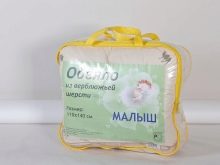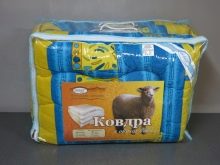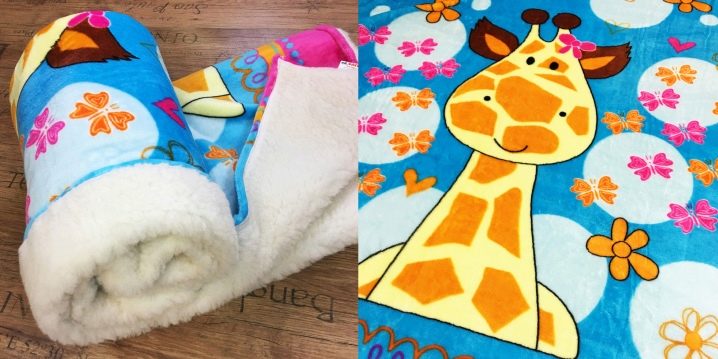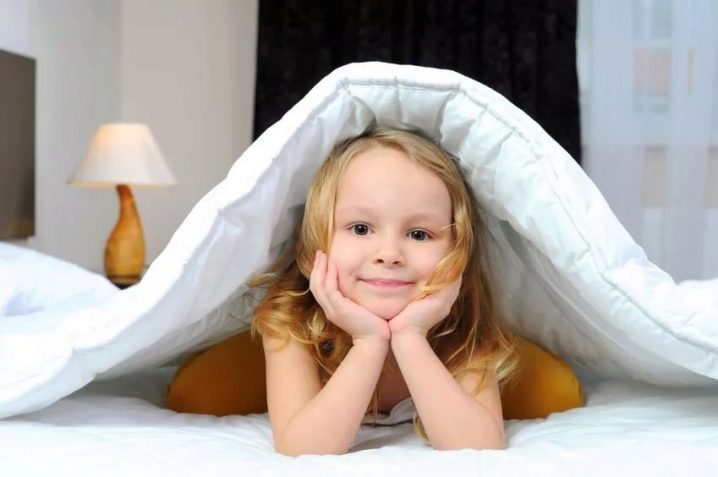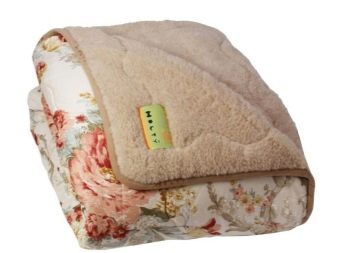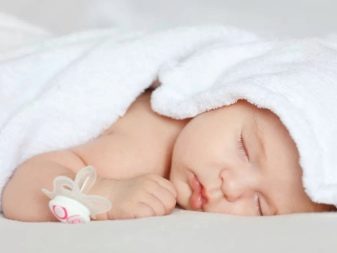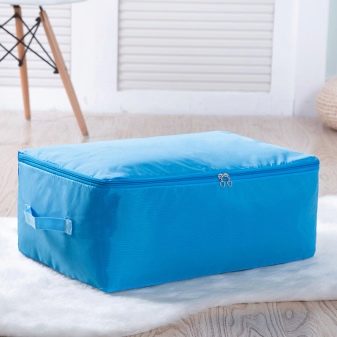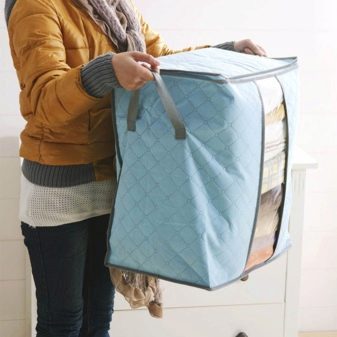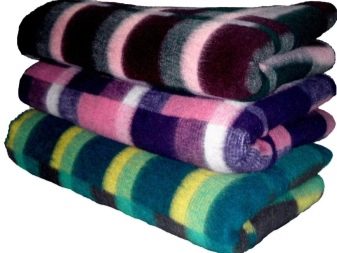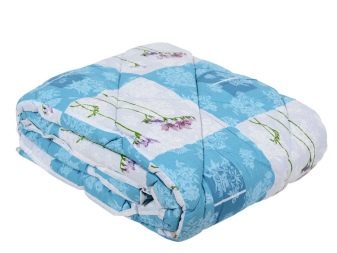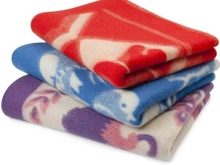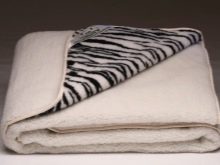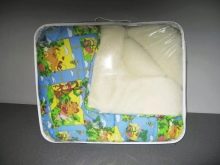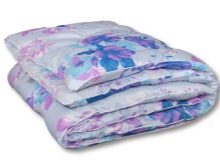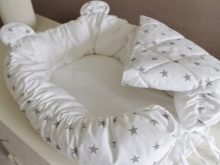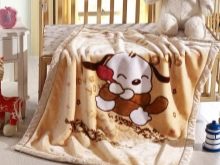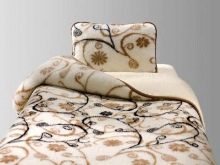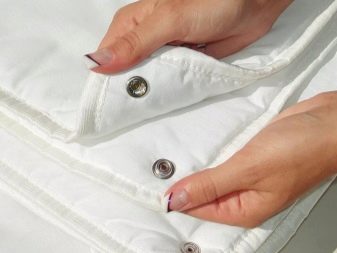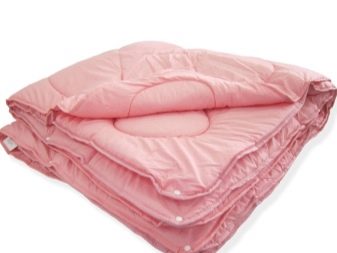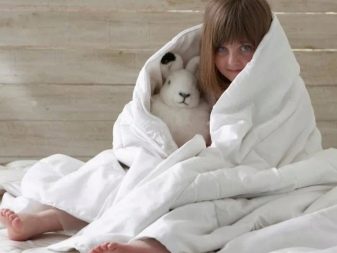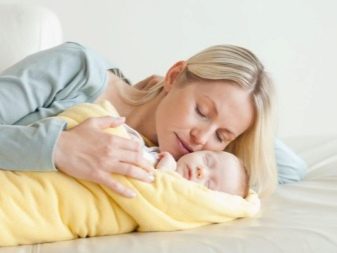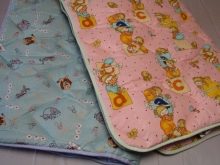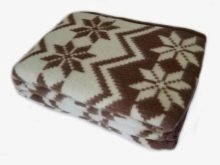Baby Woolen Blankets
A blanket for a child must be "right." It is not enough to provide comfort and convenience: you need to create maximum benefits during sleep. If synthetic types of products do not cope with the tasks, children's woolen blankets are the very "useful" tool that can strengthen the immune system without harm to the body.
Features and benefits
Children's woolen blankets are made of sheep and camel wool. Sometimes the manufacturer uses a mixture of raw materials, diluting wool with synthetics. Natural wool - the product obtained by cutting the animal. Thanks to the lanolin which is a part of it, it is possible to prevent various diseases, to rid the body of toxins, in some cases to speed up the recovery of the child.
The healing properties of the children's wool blanket are explained by the “dry” heat, which prevents overheating of the body, even if the room is warm.
Covering such a blanket child can:
- to relieve him of muscle tension, removing the tone and pain in the joints;
- normalize the work of the nervous system, removing daytime stresses;
- rid baby skin of wounds, speeding up the healing of cells and increasing their elasticity;
- speed up the process of recovery of a child with a cold;
- rid the child of prickly heat;
- to normalize the work of the blood flow, the production of fat by the skin glands, to align the pulse rate.
In addition, children's blankets contribute to the speedy recovery of injured children's knees, abrasions, sprains.
The main advantages of children's woolen blankets are:
- antistatic: giving a useful negative charge instead of a negative positive, they help reduce headaches, depression, improve the functioning of the thyroid gland;
- low thermal conductivity: creating a "correct" climate between the body and the blanket, they do not allow heat, eliminating the cooling of the child’s body;
- hygroscopicity: due to the increased ability to absorb and immediately give away excess moisture into the air, eliminate the formation of fluids, remaining always dry;
- variability of size and volume: due to the diversity of the size range, suitable for children of different ages and body build,differing in weight for each category;
- neutralization of odors: thanks to lanolin they eliminate any unpleasant odors.
Natural wool is not suitable for every child. There are children who are allergic to it, so they cannot use a woolen blanket, even if the wool is packaged in a textile cover and duvet cover.
Other fiber deficiencies include:
- the accumulation of dust, which provokes the formation of dust mites - the source of pruritus;
- observance of the rules of storage and susceptibility to mole formation, if the blanket is not used, and it is kept in a dark place without access of air, light;
- the complexity of care and changes in the structure of the fibers after washing (almost always the distance between them is reduced, which is the reason for the shrinkage of the blanket);
- more weight than synthetic counterparts, something that not every child likes and can cause discomfort.
Types and models
According to the method of production children's woolen and blankets are:
- open type;
- closed
The first variety is a woolen cloth, not covered with textiles. The second ones are more complicated: this is a filler packed in a textile case.
In addition, varieties are:
- woven, made by interweaving yarns of wool fibers;
- non-woven, dividing into two categories: felted (pressed from fibers) and quilted (in the form of lush fibrous filler, covered with breathable textiles);
- fur, resembling soft plaids.
The range of children's blankets is different in thickness: the products can be very thin, standard and lush. Woven models are resistant to deformation, convenient storage mobility, do not take up much space, however, for the cold season, their thermal characteristics may not be enough: a child under such a blanket may be cold.
The most popular quilted models. Covering a child with such a blanket in the winter, you can not be afraid that the child will freeze, even if the room is cold. High-quality blanket for a child is performed using dense material with plain weave. Companies use coarse calico, satin, batiste, twill, percale, polycotton and teak as textiles of the cover.
Wool and semi-woolen blankets are varied: manufacturers offer rulers one-sided and bilateral.Some models are universal and can be used by any side to the body of the child at will. Unilateral counterparts are more demanding. In fact, these are plaids with soft fur and smooth textile sides. Manufacturers use sateen as smooth side textiles, although sometimes models with synthetics (polyester) are also found.
Depending on this, woolen one-sided baby blankets can:
- be a soft blanket covering a child as a kind of cocoon replacing a sweater;
- be a bedspread, giving it a neat look;
- transform into a blanket, saving furniture from abrasion.
One of the most interesting varieties of children's woolen blankets is the “two in one” variant: two blankets of different thickness fastened together with buttons. Such a product is convenient and, if necessary, allows the use of each of the two blankets separately.
Dimensions
The line of children's models is divided into several groups: for babies, toddlers and preschool children, schoolchildren and teenagers. Sizes vary, can be universal (standard) or non-standard.In general, the size range looks like this: 60x90, 80x90, 90x120, 100x135, 100x140, 100x150, 110x140 cm (for young children) and 80x180, 90x180, 100x180, 120x180 cm for teenagers.
Colour
The color of the blankets is varied. If it is an open type, the coat is usually beige. In models of a one-sided plan, textiles are often monochromatic and light, close to the beige or sand scale. Felted and woven models are mostly bicolor, made in soft and bright contrasts.
The most cheerful palette is different quilted models. As a rule, not only high-quality textiles are involved in the production: colors are pleasing to the eye. These are all kinds of pink, green, yellow, blue, blue, orange and other tones. In addition to the bright background, attract prints in the form of funny animals, bears, kittens, airplanes, marine themes and other colors of childhood.
In the conclusion of the article, see the master class on how to sew a children's quilted sheepskin blanket.

